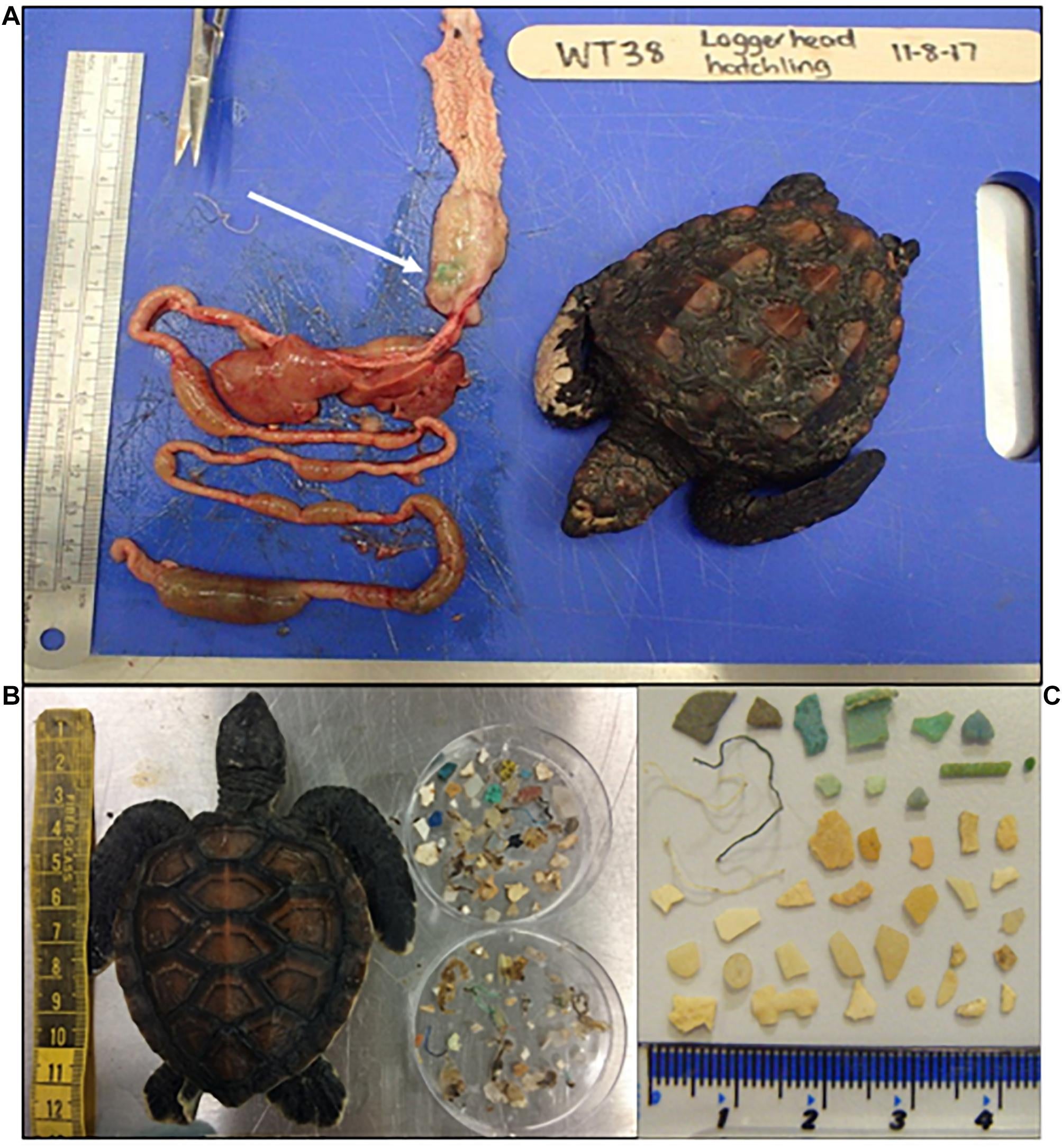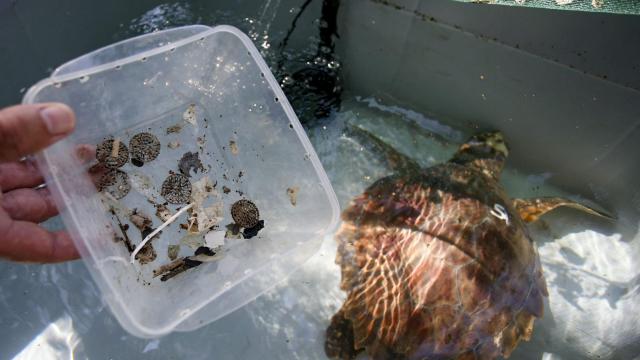Researchers probing the bellies of marine sea turtles from two oceans found an overwhelming amount of plastic in the reptiles’ stomachs. Performing autopsies on stranded and bycaught specimens of five different species of sea turtles, the research team found hundreds of bits of plastic in several dozen turtles — evidence of the ubiquitousness of human pollution on the natural world.
The turtles were mostly eating two sorts of plastic: polyethylene and polypropylene, both plastics used in a lot of single-use packaging — the sort of stuff an online order comes in, which you take out with the trash never to think about again. That plastic is commonly found near the ocean’s surface, but it also breaks apart and crops up throughout the water column. Other plastics of different densities litter the seafloor. The recent research team hailing from Great Britain and Australia looked at how these plastics are consumed by turtles, especially small juveniles, in a study published on Monday in Frontiers in Marine Science.

The researchers found that more turtles ingested plastic in the Pacific Ocean than the Indian Ocean. Four in five flatback and green sea turtles contained plastic, while 86% of loggerhead turtles did, and about one-third of the olive ridley turtles the team found across the Pacific basin. In the Indian Ocean, only 28% of flatback turtles contained plastic, followed by 21% of loggerheads, and 9% of green turtles.
This was no trace amount of plastic, either. Green turtles consumed as much as 1% of their total body mass in plastic, and for flatback turtles that number was up to 2%. It’s the equivalent of an NFL linebacker eating 2.3 kilograms of plastic.
The types of plastic also differed between the two oceans. “Plastic in the Pacific turtles was mostly hard fragments, which could come from a vast range of products used by humans, while Indian Ocean plastics were mostly fibres — possibly from fishing ropes or nets,” said Emily Duncan, a conservation biologist at University of Exeter and the study’s lead author, in a press release. (Those fishing ropes and nets are also a deadly danger for large species like sharks.)
The plastic consumption is an example of an evolutionary trap, a situation that occurs when an animal’s adaptive behaviour or habitat becomes a negative influence on that animal’s survival. One way an evolutionary trap can affect turtles is when something deleterious to the animals mimics a beneficial component of life: namely, food. This especially affects younger turtles, as they’re operating on evolutionary instincts and haven’t had the time to adequate develop behavioural instincts that allow them to avoid plastic, the research team noted in the paper.

Plastic can kill young turtles in a variety of ways. It can lacerate and block the animals’ gastrointestinal tracts and is also suspected of causing malnutrition and chemical contamination of the animals. In 2017, a sea turtle off of Thailand nearly died of blood poisoning after eating nearly 1,000 coins. These non-consumable items can mimic food after actual turtle food — things like algae — gets stuck on them, as another recent study showed, making them smell like tasty morsels to the marine reptiles. Microplastics have been found in every species of sea turtle on the planet, and this new study offers a bit more insight into where turtles are consuming this plastic, and how it affects them. (Spoiler: it affects them very badly.)
Duncan, the study’s lead author, said the plastic polymers found in the turtles are so widely used that they can’t be pinned down to any specific source. In other words, there are so many sources of plastic pollution that it’s hard to point a finger at any one bad actor. Turtles unfortunately aren’t the only organisms choking down plastic. Plants can suck up plastic through their roots, and even babies aren’t immune from ingesting plastic.
